Lifestyle - Interview

Interview with Portrait Photographer Jens Lucking
Lifestyle - Interview
by Melisa Kaya
For nearly 25 years, Jens Lucking has been working to capture the most satisfactory poses for his clients. He has visited many countries around the world and gained experience in different business areas before making a career in photography. His experiences throughout his life are reflected in his photographs, and he believes that what can be created in photography is only limited by his imagination. Jens Lucking, who has decorated his career with many international awards, reveals different perspectives in his work for both consumers and commercial companies. I talked with Jens about photography, because photography is his life.
Jens, could you tell us about the beginning of your journey? How did a $5 Agfamatic change your life?
Growing up in a small German town, I always loved taking pictures in big cities where I could find exotic cars.
When on family vacations, I would ask my dad to stop in places not too far off our route where I could chase down a Lamborghini Countach or a classic Ferrari.

Lamborghini Countach - Photo by Jens Lucking
For example, in Paris, running after one down the Champs Elysee or on Avenue George V. Sometimes he would let me take a photograph with his Mamiya so when my uncle presented me with that tiny Agfamatic camera - yes, I still have it - on my 10th birthday, I was beyond excited. Now I could jump on my bicycle any day after school and ride to my local independent Porsche dealer and take as many pictures as I liked. Well, not quite. The film cassettes were rather pricey for a young boy, let alone the cost of processing and printing.
Hard to imagine for today's children, snapping away on their smartphones.
After your curiosity period, how did you decide to pursue a career in photography? What inspired you?
Working during school holidays, I spent most of my earnings on camera equipment and printing my photographs.
The more I shot, the more I loved it. Still taking images of cars, I started photographing people, specifically shooting when traveling, reportage style. Worried I might lose my interest in photography if I turned it into a career, after completing my Abitur (baccalaureate), I embarked on a three-months-long work experience at a small Lamborghini garage.
During my obligatory 15-months civil service, working at the Medical Highschool in Hanover, I decided that taking pictures for a living was the perfect job for me and I started training to become a professional photographer.
Three years later, I packed up my things and moved to London (still my favorite city) where I met car photographer Chris Bailey. He soon became something of a mentor, teaching me not only his incredibly technical lighting styles, perfected over a lifelong career but also the business side of advertising photography.
How would you describe your photographic approach?
Thinking about my photographic approach, there are different techniques for different shoots. One thing, however, which my father has been telling me since I was a child, still holds true: Preparation is Everything. So if there is time to prepare for a shoot, I try to have as good an idea as possible as to how I want to approach it. Much of the work prior to shooting is determined by whether I am restricted by a client's brief or working on a personal fine art project. I tend to aim for clean compositions in many of my images which is why often start with getting the background or surroundings of a shot the way I want them before introducing the subject into the picture. This can be a person, a car or, like on a shoot in December, a bionic hand. Being prepared also calms the nerves when the shoot is finally happening and your mind is free to be creative.
How has exposure to different cultures affected your vision?
Traveling to different parts of the world, seeing large urban areas and wide open spaces, meeting locals in diverse places like a township in Cape Town, South Africa, a small village outside of Guilin, China, a bustling city in Egypt, Death Valley, Tokyo, Paris, Rio, all of these experiences opened up new ways to see the world through my lens. I have always been striving to find the most interesting thing I can portrait in a photograph, regardless of whether I am taking a picture of a person, a landscape or a chair. There is always an angle, an expression, a particular light/lighting technique that appeals more to me than all others.
Sometimes a mundane object can turn into a thing of beauty.
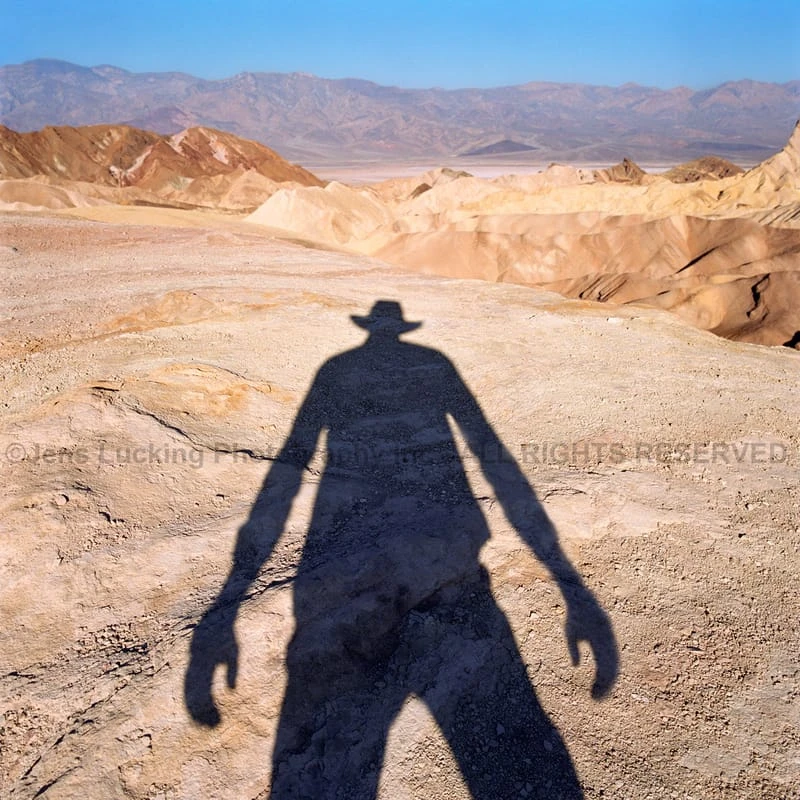
Zabriskie Point II - Photo by Jens Lucking
How did you decide to establish your own studio? Could you tell us about your studio and your team?
Working in London in my mid-twenties, I felt the urge to shoot my own work. After my full-time assistant position with Chris Bailey, I branched out to freelance assisting a number of photographers which allowed me to keep traveling and to build up a portfolio of my own. I ended up purchasing a work/live unit in a 19th century school conversion in London where I could do some smaller shoots while taking a varying team of freelancers on location or too large studios for commercial and personal projects.
What type of services do you offer to your clients?
I offer a range of services to commercial and private clients that are customized to their individual needs. From out-of-the-box, multi-layered portraits to advertising campaigns.
How did your interest in portrait photography begin? What is the most special aspect of portrait photography for you?
I started shooting photographs of people at a young age, taking pictures in my town and pretty much anywhere I went, always carrying my camera with me. I often felt shy about approaching a person I wanted to photograph so when I finally brought up the courage to speak to someone about taking their portrait, it made it more special. One man, in particular, stands out in my mind. His name was Ken and he was a neighbor in Stoke Newington, London. He seemed so intimidating to me with his died black hair and intense eyes that it took me a long time to ask him; when he said I could take his portrait, it really felt like an accomplishment in itself to me. I didn't even own a car at that time so had to borrow one from a car photographer I was assisting. The photograph ended up being displayed in London's National Portrait Gallery and was flanked by four portraits taken by one of the most respected photographers in recent history: Nadav Kander. Taking Ken to the gallery and seeing the pride in his eyes looking at his own portrait is a moment I will never forget.
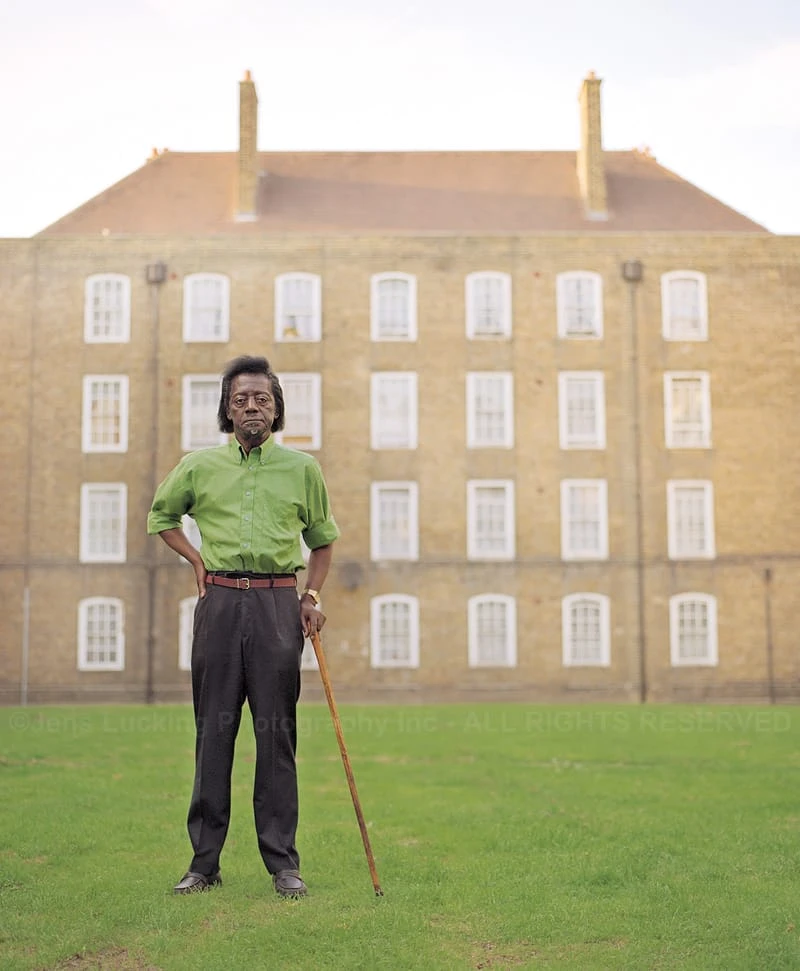
Ken - Photo by Jens Lucking
You have worked on numerous campaigns for many globally recognized brands such as Dreamworks, Pfizer, Ferrero, and Volvo. What kind of projects do you prefer to work on?
Having worked on a wide variety of different shoots from small portrait gigs to advertising campaigns, I do enjoy all different types. Just like when I was a little boy, I still love taking photographs. Sometimes clients, big or small, are intrigued by one specific image or a group of shots of mine; this often leads to greater artistic freedom for me as those individuals are giving me the space to incorporate my ideas into the project. One advertising campaign for Dreamworks/FUHU, for example, started that way; the advertising agency's creative director was so taken my photograph GIANT JACKSON that he went through great lengths to have me shoot the imagery.
That same photograph inspired a portrait project I have been working on for a number of years now. It brought me many commissions which were really fun to shoot.

Giant_Jackson - Photo by Jens Lucking
Could you tell us about your exhibitions? How does it feel to accept congratulations?
Exhibitions are always fun, having visitors take time to view your photographs. I love standing next to people looking at my pictures in a show without them knowing I am the artist. It can be a lot of fun to hear them speculate what was going on in my head when taking the shot. Of course, it is also nice if a visitor is so taken by a photograph that he or she wants to take it home immediately and hang it on the wall.
Another highlight is when gallery owners give you positive feedback, stating that your images have brought in a lot of new customers and it might even lead to the show getting extended.
Besides your exhibitions, you have won many notable awards. Could you tell us about the awards that you won?
Over the years there have been many photography awards and every time an image of mine is chosen, I consider myself lucky that a jury appreciated my work enough to choose it from hundreds, sometimes thousands of images.
My mentor, Chris Bailey, encouraged me to join the AOP (Association of Photographers in London, UK) and enter my work. The first one I received was at the AOP Assistants' Awards in 1998; also, the first one I entered. It felt special for one more reason: the picture was taken during a work trip to Asia where I was unable to bring my own equipment so I shot less than one roll of film of personal pictures on my employer's camera during the entire 3-week excursion. The year after, another image taken on that same trip made it into the Awards.
In 2004 I stood among a large crowd of people inside London's National Portrait Gallery during the Photographic Portrait Prize Awards ceremony and almost fainted when, at the end of the awards presentation, the announcer declared my image TOKYO the overall winner. The recognition from the judges and so many photographers, whose work I had been admiring for years, was a very humbling experience; it felt simply unreal.

Tokyo - Photo by Jens Lucking
Another reason to get excited about receiving an award is when the honored image shows someone close to me; my father, my wife, my son and my best friends have all been featured in different awards shows over the years, most recently at the International Photography Awards (Lucie Awards), where my Hammer Time Triptych received an Honorable Mention in 2018.
Here's a list of awards my images were featured in:
2019 International Color Awards

2019 International Color Awards Honorable Mention Dead End - Photo by Jens Lucking
2018 IPA - International Photography Awards
2018 APA LA Off The Clock
2017 Communication Arts Photography Annual
2016 Communication Arts Photography Annual
2016 APA NY Give Us Your Best Shot
2016 APA LA Off The Clock
2015 APA SF Something Personal
2014 APA SF Something Personal
2013 IPA - International Photography Awards
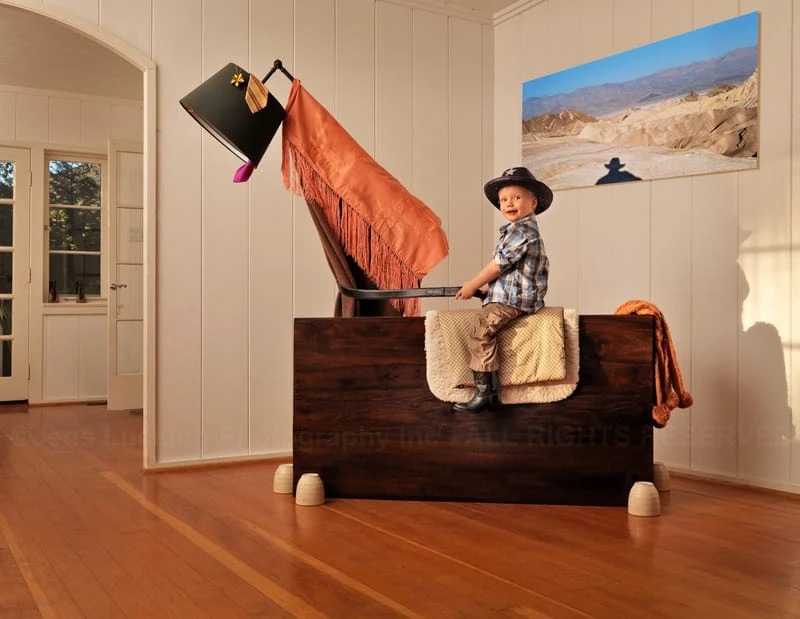
Indoor Sheriff - Photo by Jens Lucking
2013 APA LA Off The Clock
2012 APA LA Off The Clock
2010 The Art of Photography Show
2009 AOP Open Awards
2005 AOP Awards
2004 Schweppes Photographic Portrait Prize
2002 AOP Awards
2001 AOP Awards
2001 Velvia Bursary Award
2000 Kodak Class of 2000 Award
2000 John Kobal Photographic Portrait Prize
2000 AOP Assistants Awards
1999 AOP Assistants Awards
1998 AOP Assistants Awards
What are the advantages of an award-winning photographer?
I believe there are certain advantages to having your imagery awarded by the industry. Advertising clients find it easier to justify the choice of an award-winning photographer to a client, personal customers often find it exciting to have a photograph on their wall that has won a prize. If someone loves your imagery, they might feel that their taste has been validated by a jury of industry professionals.
What are the key points that you pay attention to most before accepting a new project?
There are a few key points that make me look forward to a new project:
Is the concept artistically exciting? Is the product or person to be photographed interesting?
If the project is commercial, is the company forward-thinking, giving back to the community, mindful of its impact on the planet?
A creative director from Berlin, whom I met working on a car shoot many years ago, recently started a new agency specifically targeting that type of company; which I think is brilliant. Can I fit the project into my calendar and is the budget sufficient to get the best possible imagery expected by the client?
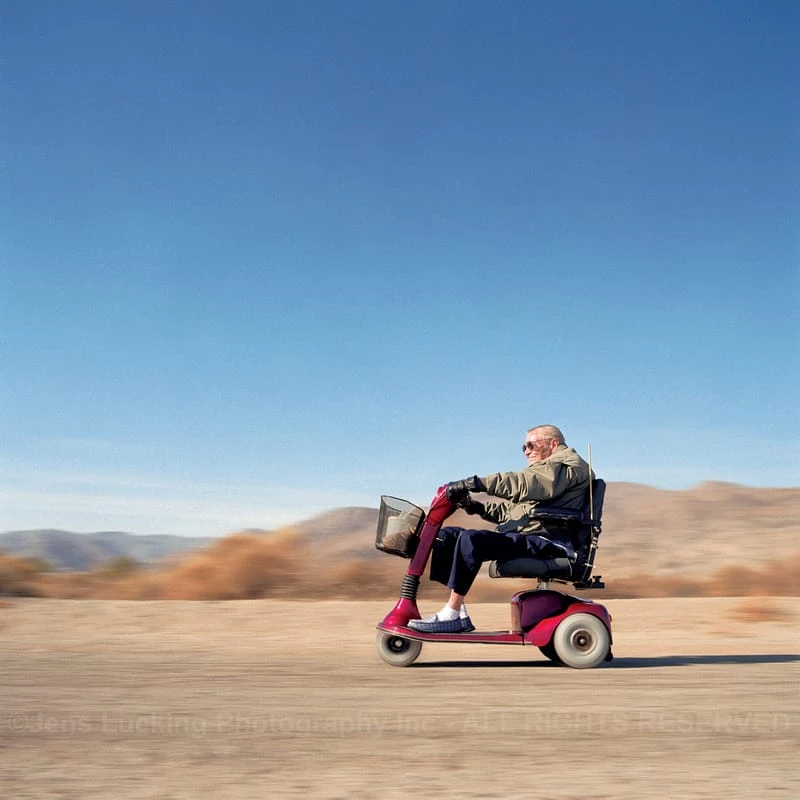
Speedfreak - Photo by Jens Lucking
In your projects, do you work in a previously defined concept or do you prefer to create your own concept?
Every project is different. Some are relatively rigid, where, for example, a certain layout must be followed to allow for a specific ratio, the placement of logos, slogans and other elements that might be placed over the image when put on a billboard, in a publication or on a website. Others can leave a lot of freedom for the creative team, sometimes simply producing a beautiful image and then designing an advertisement around it. Fine Art projects sometimes start with a very clear idea, a precise vision for composition, lighting and color pallet whereas others develop in the moment.
What does Commissioned Portraits mean? Could you briefly tell us about the process?
My commissioned portraits are often photographed in multiple elements and later combined into a single image. Sometimes these different parts are shot in more than one location and it is crucial to have the lighting match closely to be able to create a final, realistic-looking collage.

Big Bear - Photo by Jens Lucking
After a conversation with my clients, discussing different ideas and their interests and preferences, I work on a tailored concept which is presented to the customers. Once the concept is agreed upon, I start planning out the shoot, finding the right location(s) and props needed, picking out clothing for the various people to be included in the image. Often times, the resulting portraits have elements of surprise, scale, and surrealism. You might find an oversized baby sitting on a roof, a basketball-playing young girl jumping 6 feet into the air scoring against her father, a girl pulling her twin sister flying through the air with her arms outstretched or a little boy walking a giant dog down the Venice Boardwalk.
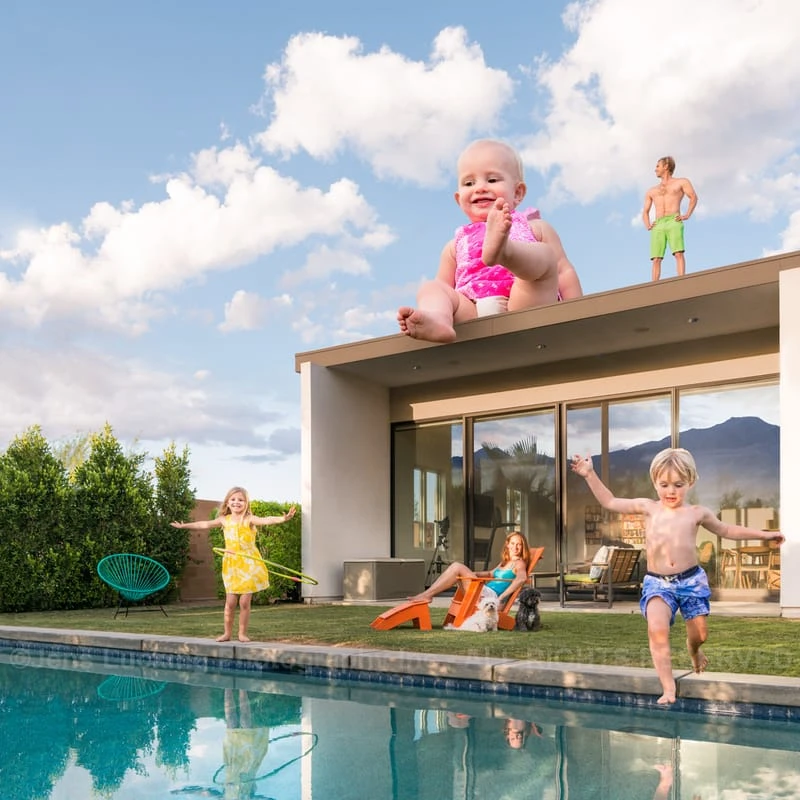
LaQuinta - Photo by Jens Lucking
These personalized portrait shoots are among my favorite projects; I just finished another featuring a couple with their two beloved dogs Baby Jane and Trigger that I was able to have delivered just in time to the happy lady's birthday party in Palm Springs. She and her husband with their gathered friends and family were blown away, she texted me after the reveal, her husband adding: best present ever!
I must admit that having a customer love their image is still the best thing about any commissioned shoot, personal and commercial alike.
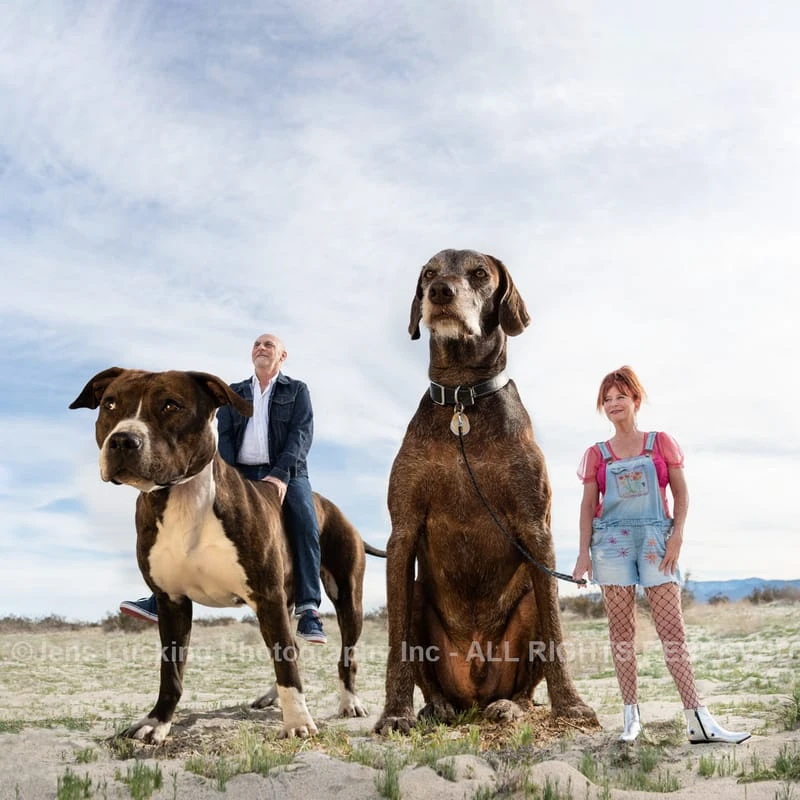
Kate Osh Trig Jane - Photo by Jens Lucking
You can contact me about a customized portrait shoot; no idea is too crazy, no location too far.
Which factors determine the project budget?
Budgets differ drastically depending on usage for commercial clients and the complexity of the shoot across all projects. A company might want to have a very specific image that fits perfectly within their brand.
Nothing is left to chance and accordingly, the budgets can be very high, paying for location finders, location fees, multiple creatives on set, hair stylists, make-up artists, wardrobe stylists, on site technicians, professional drivers, models, hotels - the list goes on. Some projects are in the making for a number of months before the first photograph is taken on some remote mountain road halfway across the world. Another project might be much smaller in scale, however, I still aim to get the best possible image achievable within the budget.

SLR - Photo by Jens Lucking
How do you protect the rights of your photographs in this online era?
As a longtime member of the AOP (Association of Photographers) while living in the UK and now a member of the APA (American Photographic Artists) I strongly believe in the protection of photographers' copyrights.
When publishing imagery online, I tend to add a copyright disclaimer below or, depending on the site, on the actual image. I have found my images published without authorization hundreds of times and would like to appeal to everyone that a simple mention of the artist goes a long way. When it comes to severe copyright infringements by corporations, I rely on a US-based group chasing down the infringers and retrieving applicable fees and fines in my name.

Engel - Photo by Jens Lucking
Could your clients use the photographs in any publication, catalog, website, ad or other platforms in the future?
The usage of my images is typically negotiated during the planning process. However, sometimes a client uses an image for the previously agreed upon length of time and then decides to use it for longer or in a different medium, in which case they approach me and we discuss additional fees. Others pay for a full buyout of the imagery produced and those then have unrestricted usage rights.
What advice would you give to photographers who want to pursue a career in photography?
After over 25 years working as a photographer, I still love taking pictures and seeing people react to them. Since most people spend in excess of 40 hours each week at work, I find it very important that you enjoy your profession. I would advise aspiring photographers to find their personal style, develop some form of visual identity, yet at the same time keep an open mind with regards to your clients' ideas; when both you and your client love the imagery, you've achieved what you need to be successful: you are proud of the image and your happy client will spread the word about your skills.
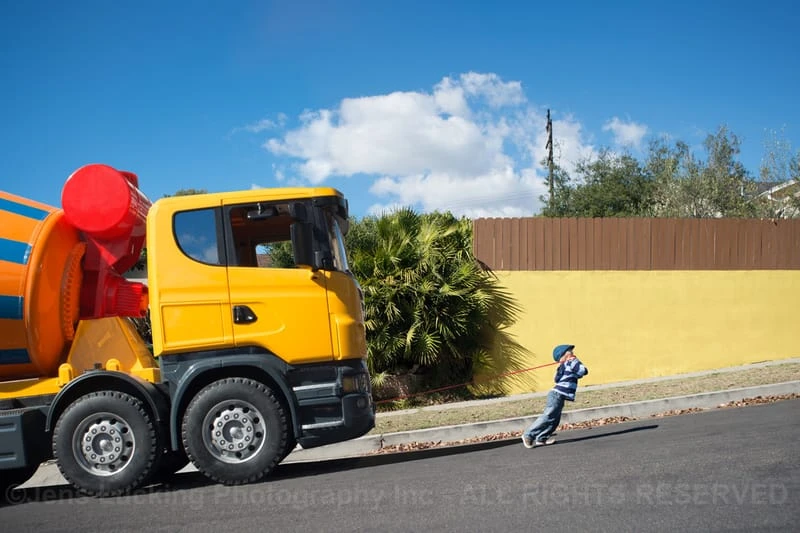
Concrete Puller - Photo by Jens Lucking
What is your favorite photograph that you have ever taken?
This is a tough question, my favorite photograph? There are a few that I particularly like, often for personal reasons; one of them is the first Hammer Time, shot in 2012. It shows a gold 1973 Ford LTD that I drove in New York about 20 years ago when it belonged to a friend of mine. Over a decade later, I bought the car, positioned it on a concrete surface and had my wife lie underneath it, holding a hammer.
The image still makes me smile, it was featured in two different awards and, so I am told, makes people happy. I guess they can relate to the image because everyone has had something break and tried to fix it unsuccessfully; so what do you do? You grab a hammer !
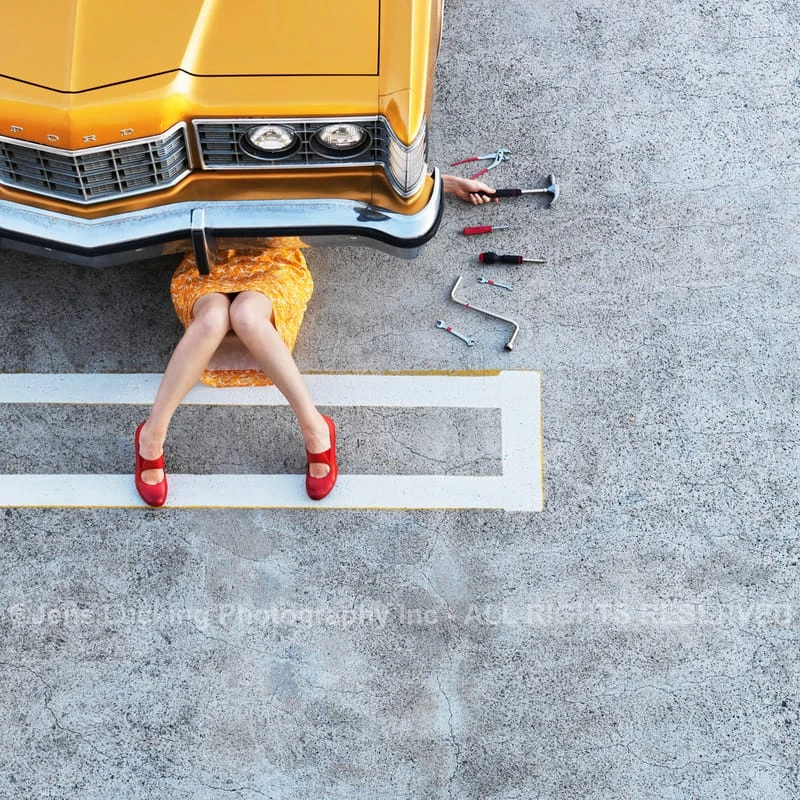
Hammer Time I - Photo by Jens Lucking
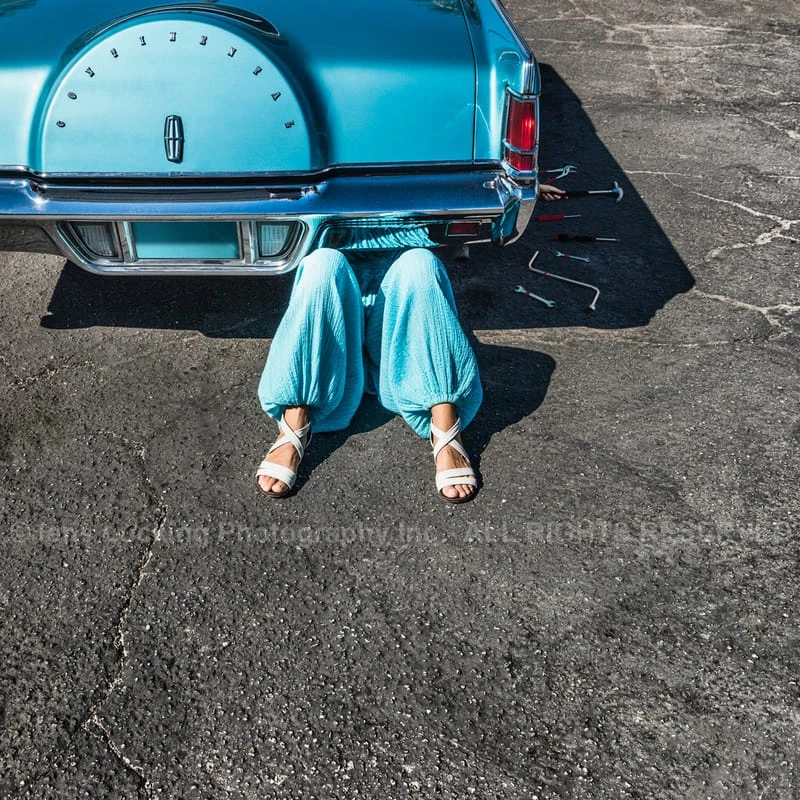
Hammer Time II - Photo by Jens Lucking

Hammer Time III - Photo by Jens Lucking
What do you think about social media? How can our readers follow you?
You can check my website for new imagery and upcoming exhibitions, subscribe to my Facebook page (www.facebook.com/jensluckingphotography) and follow me on Instagram (@jenslucking); I am currently in the process of working on a separate Instagram page (@jensluckingphotography) specifically for my professional photographs as I also post personal pictures on the original Instagram page.
What is next for you?
Currently, I am working on a second book project with my friend and local art director, Michael Murphy. Our last book, Santa Monica: A look back to 1902 from today, has been published by Arcadia, is available on Amazon and resulted in a 3-months-long exhibition at the Santa Monica History Museum.
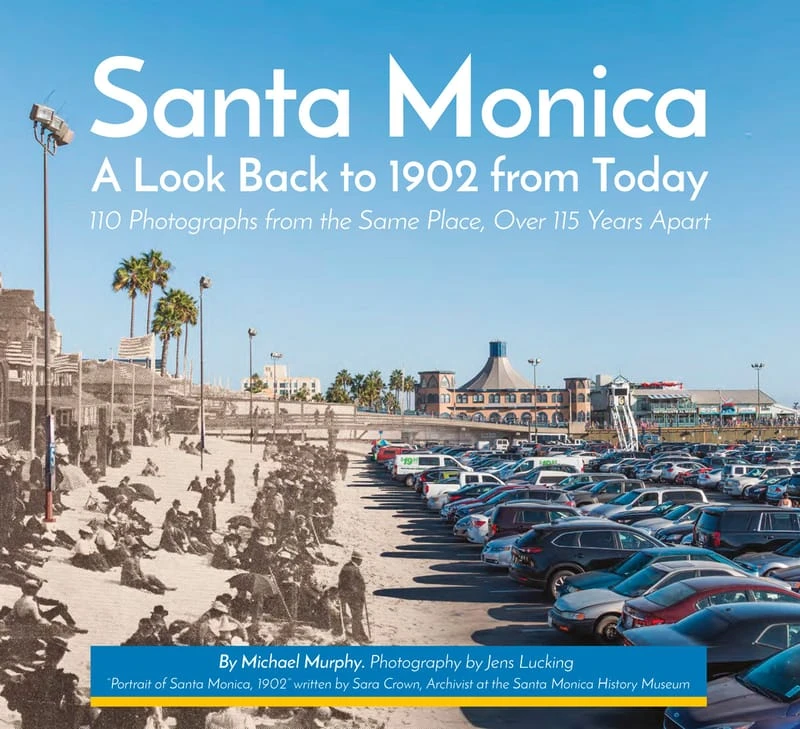
SaMo1902 - Photo by Jens Lucking
The new project focuses on the Santa Monica Pleasure Pier and started with a reproduction of a book produced in 1917; the finished photographs will be on display at the SaMo History Museum later this year.
Thank you Jens for your time.
For more information, please click here to visit the website of Jens Lucking
This interview was conducted in a Question-and-Answer format. The answers were checked for grammar and punctuation and published without any additional editing. Monday, March 25, 2019. All photos are the property of their respective owners.